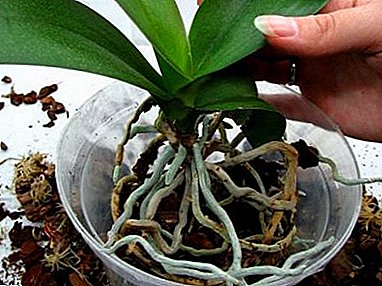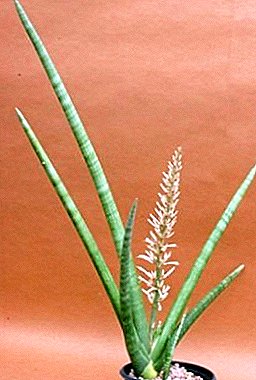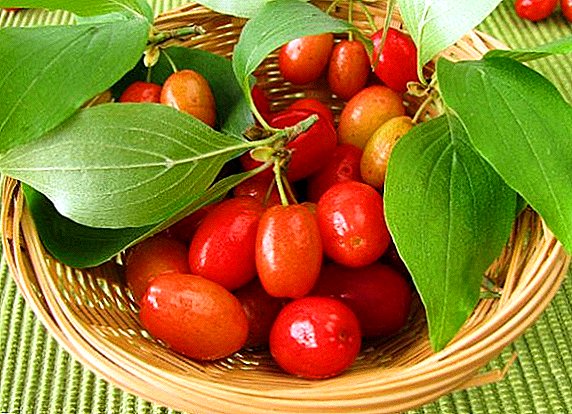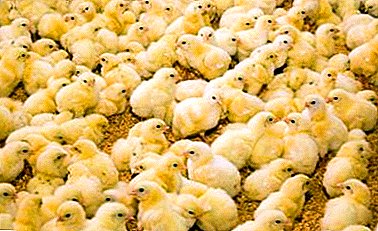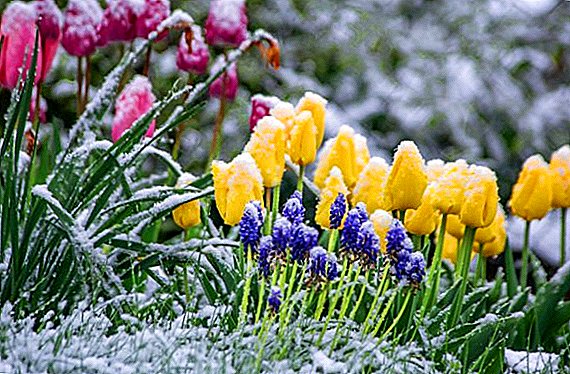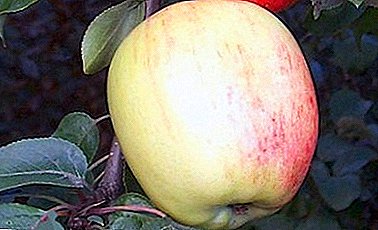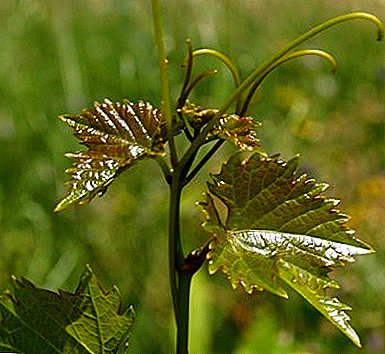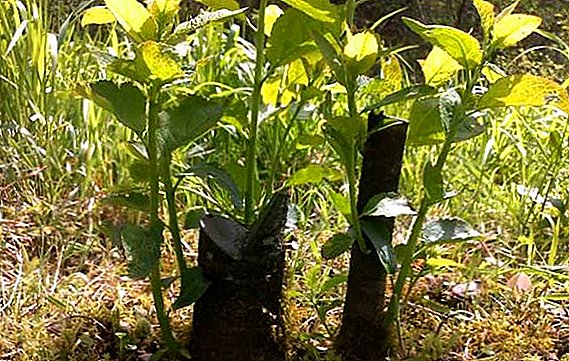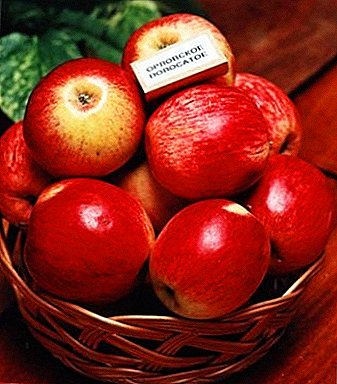
The well-known apple variety “Orlovskoye striped” is distinguished by large rounded oblong and juicy fruits with pale pink, fragrant pulp, belongs to late-autumn species.
Such an apple, with perceptible sourness, will decorate any richest table.
Distribution areas
A wonderful variety of fragrant apples is very common in the central regions of the country, previously it grew in the Baltic countries, it is listed in the official register of several regions of Russia:
- Central.
- Northern.
- Middle Volga.
- Northwest.
- Black Earth.
- Volgo-Vyatka.
In these regions, the Oryol striped apple is a very popular variety.
How to keep apples in the winter?
 Experienced hostesses lay apples for the winter as follows.
Experienced hostesses lay apples for the winter as follows.
Clean boxes made of wooden slats are prepared in advance, with wide slits, so that the fruits breathe freely and are ventilated.
After that, each apple is individually wrapped in newsprint. Newspapers do not have to be printed just now, as fresh inked ink stains the fruit.
It should be remembered that the apples of this variety are covered with natural wax film, so newspapers with dried paint will have a careful effect on the thin skin.
A newspaper piece, the size suitable to envelop the apple from all sides, should be thoroughly kneaded before wrapping the fruit. Each apple, therefore, should be wrapped in a loose breathing nest of paper.
If someone has another clean paper, light, thin and quite elastic, you can use it.
All fruits, wrapped in their nests, neatly placed in boxes, in layers. Filled up to the top boxes should be placed in the cellar, where the temperature is kept within +4 - +10 degrees Celsius.
If you do not have a cellar, then boxes of apples can be put on the balcony, wrapped them in thickly quilted thick blankets, keeping them from frost. The apples wrapped up in this way are preserved until spring.
Why this method of storage is justified:
- because the thin skin characteristic of this variety is not injured;
- if one apple rot, the neighboring fruits will remain untouched by rot, because the paper will not allow mold to penetrate to them.
A small number of apples can be stored in a refrigerator at a temperature of +4 degrees Celsius, where they persist until January without loss of taste and nutrients.
Pollination

Experiments carried out at the test station showed that this variety is practically self-infertile.
In other words, self-pollination in this apple is almost absent.
To improve the harvest, it is recommended to plant Antonovka next door.
Its proximity gives the highest yield growth.
Sufficiently high results are also marked by the presence of:
- Apple Orlik;
- Welsey;
- Memory Warrior.
Pollination of these varieties gives the ovary in 85% of cases.
In the role of acceptable pollinators planted:
- Northern Sinap;
- Autumn Striped.
Description variety Orlovsky striped
The tree of this variety is of medium height. The crown is extensive, round, with thick, flexible branches at the ends. Forming crown branches depart at an angle of 90 degrees from the main trunk.
The trees in the middle lane are well tolerated by frost, have good yields.
Some apples are located on annular processes growing on three-year branches. Others are placed on flexible two-year rods. The branches are growth and fruiting.
Trees stretched to 15 m, well-branched root system, goes 2.5 m deep.
On the branches large, convex buds. The leaves often grow, rounded, with teeth along the edges, pubescent, thicker by the end of the branches, on strong petioles, deviate from the stem at a slight angle.
Large white, cup-shaped flowers, with soft pink buds adorn the tree in the spring, like a bride's veil. Petals on flowers concave, round, overlap at the edges. Powerful pistil is surrounded by stamens. The stigma of the sticky pistil is located just above the loose anthers.
Apples are large, painted with crimson-red stripes, on the lettuce main background and noticeably lightening dots under the skin. During the period of full maturity - the main tone becomes yellowish. These apples are pleasant to the taste, sweet and sour and surprisingly fragrant. The flesh of apples is tender, white or pinkish, even cream, fine-grained.
The stem is short, straight, thin. The funnel is pointed, shallow. Deep saucer, with a slightly ribbed wall, calyx closed, occasionally open. Heart large. Seed chambers are open, seeds are dark, fuzzy, sometimes underdeveloped.
The shape of the apples is slightly elongated, resembling a trimmed cone or a perfect bun with a handle. Stalk brownish strong color. The skin is thin, delicate, covered with a thin matte layer of natural wax. Requires careful handling during collection and storage for long term storage.
Fruits begin to ripen by early September, although some gardeners relate to late autumn. The average fruit weight is from 120 to 150 grams.
A photo
Below in the photo you can clearly see the fruit of the apple variety “Oryol striped”:




Breeding history
An unusual apple of the variety “Orlovskoye striped” was obtained in 1957 by the method of hybridization at the VNIISPK Meckintosh and Bessemyanka Michurin by Russian breeders E.N. Sedov and T.A. Trofimova. In 1967, the variety is recognized as an elite.
The natural place of growth of this variety is the Baltic wet countries. Therefore, it does not tolerate drought. However, he received great recognition at international exhibitions in Germany. The variety is considered to be of average winter hardiness. Like other early varieties, flower buds can damage spring return frosts.
Yield
 Usually, to give a crop, this tree, begins on the 4th year of life, but the imparted grafts begin to bear fruit already on the 3rd year.
Usually, to give a crop, this tree, begins on the 4th year of life, but the imparted grafts begin to bear fruit already on the 3rd year.
In the seventh year, one tree produces from forty to fifty, by the fifteenth year, up to eighty kilograms of apples, which amounts to 200 centners per hectare.
The apple tree is considered to be fast-growing and high-yielding, the harvest happens once a year.
Landing
For planting is great seedling three years old, height 1.6-1.8 meters, with a closed root system. Sell seedlings 3, 5 and 7 years.
Planted trees in the spring, before the buds bloom or fall. Before the onset of cold weather, the sapling must have time to take root, so two or three months must pass.
It is alleged that the tree planted in the autumn, takes root better, in the non-black earth prefer to plant in the spring.
It is necessary to prepare a hole in advance. If planting in the spring, dig a hole in the fall. For autumn planting a landing site is prepared in the summer, no less than 30 days.
The variety "Oryol striped" feels good on fertile, moist, well-drained soil. But planting a tree where ground water is close to it cannot be.
Dimensions of the recess for landing:
- diameter 1 meter;
- depth 80 is not less than centimeters.
Planting nutrient composition:
- forest soil;
- organic fertilizers;
- mineral.
Well-mixed nutrient mixture to fill the groove on the third. In the pit to form a small cone, which carefully plant a seedling, straightening the roots gently around the circumference, to the base of the cone and bottom of the pit.
 Sprinkle the roots, mixed with humus, and water abundantly, and add the rest of the soil from above. You can also water from above, right at the trunk.
Sprinkle the roots, mixed with humus, and water abundantly, and add the rest of the soil from above. You can also water from above, right at the trunk.
Root neck should not be buried in the soil, leave it 6 cm above the ground.
As fertilizer can be used:
- compost (2 buckets on 1 sapling);
- wood ash (1 kg);
- superphosphate (see instructions);
- last year's dung.
The gap between the rows of vigorous trees leave about 6 meters, between seedlings - 4 meters. Little trees are planted closer.
Attention!Apple trees feel good on soil with acidity not higher than 6 pH. If the acidity in the garden is higher, digging up the ground, add dolomite flour, slaked lime. Phosphate fertilizers are not used with lime, you need to take a break of at least 3 weeks between them. Roots should not touch lime either.
Cultivation and care
A tree well increases the yield if fertilizers are applied and the crown is correctly formed. The best is considered vazoobrazny or sparsely-tiered type of crown.
If rodents, hares, the lower part of saplings and trunks of adult trees are found close to the garden, it is recommended to cover them with a net from rodents or whiten them.
The place of planting and growing of the apple must be well lit, otherwise the fruit will not be sweet enough and the harvest will be less. Ecology, good weather with enough rainfall improves the crop.
If there is a drought in the region, it is recommended to water the trees 4-5 times a month (a bucket of water under one big tree, in the morning and in the evening). Watering in July-August is especially needed, at this time the buds of the next harvest are formed and the apples of the current year are poured.
The tree does not like flooding, so you need to combine watering properly with weather phenomena. In drought, water more often, if it rains regularly, you can not water it at all.
Watering after August should not be, it can affect the hardiness and delay the growth of shoots.
Plant an apple tree well on sandy, floodplain, loamy soil and leached chernozem. On the sand requires active watering and fertilizing.
Yield is also improved by re-grafting.
In the process of growth, the aisle is not treated with a deep plow so as not to injure the roots. It is necessary to mow the grass, in the aisle, clean and loosen the soil at the trunk.
Soil in tree trunks mulch horse horse humus to protect the young tree from frost. Also, the bottom of the trunk is covered with outworn tights, the material must breathe.
It is better to feed trees in spring with humus or horse humus, 5-15 kg per m2. On rich lands, one should not frequently feed them, but should carry out sanding on an annual basis.
Another use of urea (500-600 g) or ammonium nitrate. Also in the fall you can make a combined fertilizer, without nitrogen.
Diseases and pests

In Russian gardens is very common apple disease - scab, which affects the fruits and leaves, reduces yield, affects the appearance and winter hardiness of trees.
The scab is carried by spores in the spring from fungi, preserved in autumn leaves. Up to 3 million spores are ejected from one infected leaf. Chemical spraying - effectively destroys scab.
But the variety of apple trees "Oryol striped" has resistant immunity to scabWhat is its main difference and advantage.
If trees are attacked by caterpillars, it is good to wrap the trunk with a sticky cloth not at a height of 50 cm from the ground. The bandage will not allow the caterpillars to crawl on the tree.
Spraying from various harmful butterflies produce before flowering, so that the fruits do not accumulate chemical harmful substances.
The trunks below are whitewashed and wrapped in a special net to protect them from rodents and hares.
The Oryol Striped Apple is a tasty dessert for your table!


